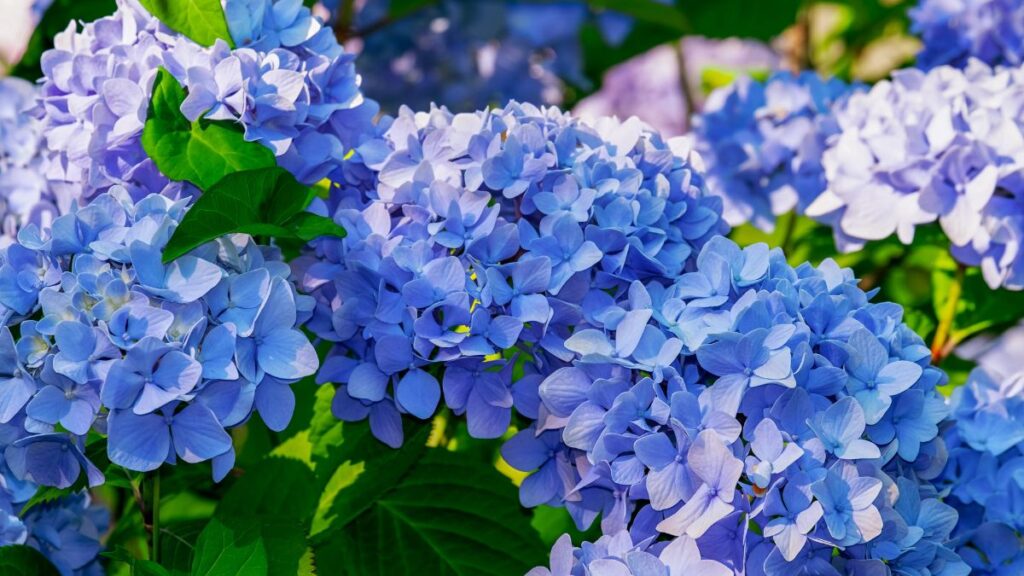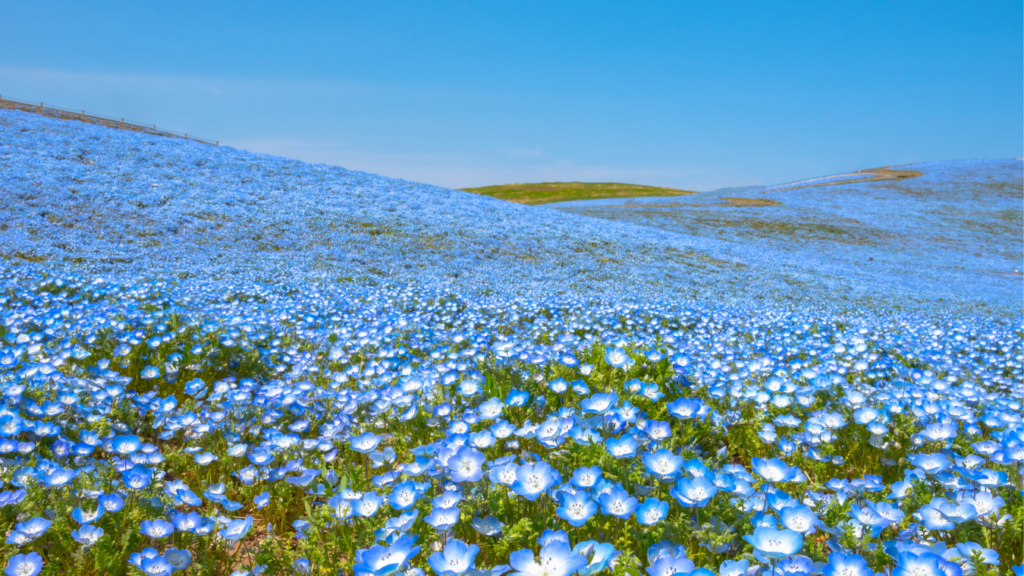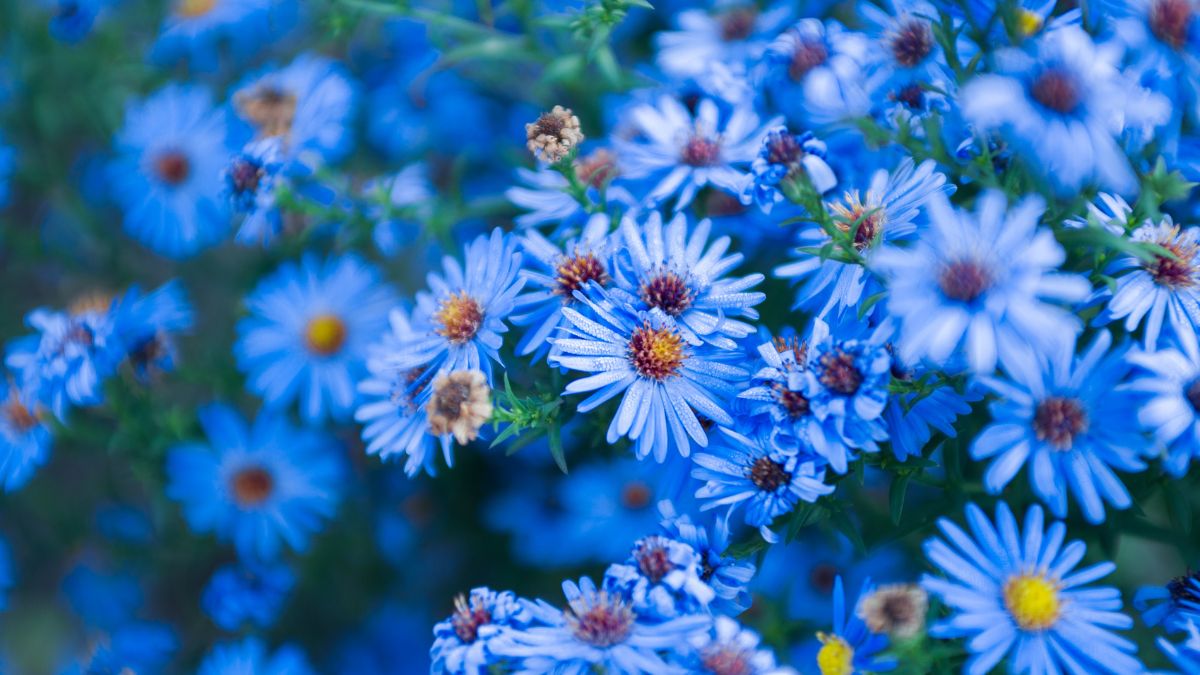Blue flowers have long captivated gardeners and flower enthusiasts with their unique beauty and calming allure. In this visual guide to different shades and types of blue flower varieties, we delve into the world of these stunning blooms. From the historical significance of blue flowers to the symbolism they carry, this article explores the diverse range of common and rare blue flower types, offering insights into their care, cultivation, and design possibilities for creating enchanting blue-hued gardens.
Introduction
In the realm of flowers, blue blooms are exceptional, resembling a peacock among pigeons, thanks to their striking hue. Their unique color immediately catches the eye, infusing any garden or bouquet with a serene, cool ambiance.

Why Blue Flowers Stand Out
Blue flowers are like nature’s way of saying, “Look at me, I’m different!” In a sea of traditional pinks, reds, and yellows, blue blooms add a pop of unexpected color that commands attention.
Historical Significance of Blue Flowers
Throughout history, blue flowers have held a special place in various cultures and mythologies. From symbolizing love and prosperity to representing peace and tranquility, these blooms have been revered for their beauty and symbolism.
Common Blue Flower Varieties
If you’re looking to add some blue flair to your garden, here are a few popular blue flower varieties that are sure to make a statement:
Hydrangeas
These fluffy pom-pom-like blooms come in shades of blue that can range from pale sky to deep indigo. Hydrangeas are perfect for adding a touch of elegance to any garden or floral arrangement.
Delphiniums
Known for their tall spires of vibrant blue flowers, delphiniums are like the royalty of the garden. These majestic blooms add height and drama to any landscape.
Forget-Me-Nots
With their delicate clusters of tiny blue flowers, forget-me-nots are not only charming but also carry a sweet sentiment. These dainty blooms are perfect for adding a touch of whimsy to your garden.
Rare and Unique Blue Flower Types
For the adventurous gardeners looking to stand out from the crowd, here are a couple of rare and unique blue flower types worth considering:
Himalayan Blue Poppy
Known for its striking sky-blue petals, the Himalayan Blue Poppy is a true gem in the world of flowers. These elusive blooms are a sight to behold and a challenge to grow, making them a coveted addition to any garden.
Blue Star Creeper
If you’re looking for a low-maintenance ground cover that adds a splash of blue, look no further than Blue Star Creeper. This tiny flowering plant forms a carpet of tiny blue flowers, creating a magical effect in your garden.
Shades of Blue: A Spectrum of Color
Blue is not just blue when it comes to flowers. There is a whole spectrum of shades to explore, from soft baby blues to deep navy hues. Understanding these different tones can help you create stunning color combinations in your garden or floral arrangements.
Exploring Different Blue Hues
From cool cerulean to moody cobalt, each shade of blue brings its own unique vibe to the table. Experimenting with different hues can help you create a dynamic and eye-catching display of blue blooms.

Understanding Color Combinations with Blue Flowers
Blue is a versatile color that pairs beautifully with a range of other hues. Whether you’re going for a monochromatic look with varying shades of blue or want to create a bold contrast with oranges and yellows, understanding color combinations can help you create a truly stunning floral display.
Growing and Caring for Blue Flowers
Essential Care Tips for Blue Flowers
So, you’ve decided to dive into the enchanting world of blue flowers. Congratulations! To keep these beauties blooming their best, make sure to give them plenty of sunlight, well-draining soil, and regular watering. Some blue flowers, like hydrangeas, might appreciate a bit of extra acidity in the soil to maintain their vivid hue. Remember, a little love and attention go a long way in making your blue blooms flourish.
Best Growing Conditions for Blue Flowers
Blue flowers have their preferences when it comes to where they put down roots. Most varieties thrive in full sun, but there are a few shade-loving blooms that bring that touch of blue to darker corners of your garden. When planning your blue flower garden, consider factors like soil type, moisture levels, and the specific needs of each plant. With the right conditions, your blue flowers will reward you with their striking color and charm.
Blue Flowers in Garden Design
Incorporating Blue Flowers into Landscape Design
Looking to add a touch of serenity and tranquility to your garden? Blue flowers are your go-to choice. Whether you’re aiming for a monochromatic blue theme or using them as accents to complement other colors, these blooms can work wonders in your landscape design. Mix and match different shades of blue flowers with contrasting colors for a visually stunning and dynamic garden space.
Creating Color Harmony with Blue Flowers
When it comes to creating color harmony in your garden, blue flowers are a versatile player. They can act as a calming element when paired with whites and greens or add a pop of vibrancy when combined with yellows and oranges. Experiment with different combinations to find what speaks to your aesthetic. Don’t be afraid to play with contrasts and textures to elevate the visual appeal of your garden using the magic of blue blooms.
Symbolism and Meaning of Blue Flowers
Symbolic Meanings of Blue Flowers
Blue flowers aren’t just a feast for the eyes; they also carry symbolic meanings. From conveying feelings of peace and serenity to symbolizing trust and loyalty, blue blooms have a rich tapestry of symbolism attached to them. Whether you’re giving them as a gift or using them in floral arrangements, understanding the meanings behind blue flowers adds an extra layer of depth and intention to your gestures.
Using Blue Flowers in Floral Arrangements for Symbolism
Blue flowers are powerful in floral arrangements, conveying various emotions like calmness or mystery. Use them strategically for meaningful bouquets. Explore different blue flower varieties for your garden or arrangements to evoke tranquility or express sentiments. Embrace their elegance and timeless charm to brighten your surroundings.
Conclusion
In conclusion, the world of blue flowers is as diverse and captivating as the hues they come in. From the historical significance and symbolic meanings to the wide array of common and rare varieties, blue blooms offer a unique charm that enchants gardeners and flower enthusiasts alike.

Whether you’re drawn to the majestic delphiniums, the delicate forget-me-nots, or the elusive Himalayan Blue Poppy, there’s a blue flower out there to suit every garden and bouquet. Understanding the different shades of blue and how to pair them with other colors can help you create stunning displays that evoke a range of emotions and themes.
FAQ
Q: Why are blue flowers so captivating?
A: Blue flowers are captivating due to their unique hue, which stands out in gardens and bouquets. Their cool serenity adds a touch of elegance to any setting.
Q: What is the historical significance of blue flowers?
A: Throughout history, blue flowers have held special significance in various cultures and mythologies. They have symbolized love, prosperity, peace, and tranquility.
Q: What are some common blue flower varieties?
A: Some common blue flower varieties include hydrangeas, delphiniums, and forget-me-nots. These flowers come in shades of blue ranging from pale sky to deep indigo.
Q: Can you name some rare and unique blue flower types?
A: Rare and unique blue flower types include the Himalayan Blue Poppy, known for its striking sky-blue petals, and the Blue Star Creeper, a low-maintenance ground cover with tiny blue flowers.
Q: What are the different shades of blue flowers?
A: Blue flowers come in a spectrum of shades, from soft baby blues to deep navy hues. Each shade brings its own unique vibe to garden designs and floral arrangements.
